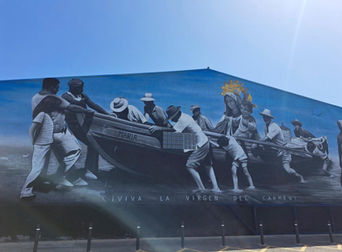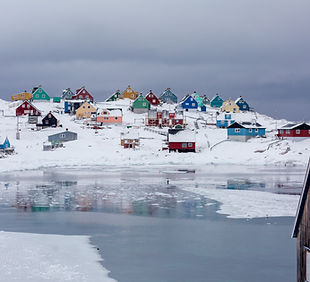
RESEARCH SITE 3
Macaronesia
Macaronesia

Macaronesia’s four archipelagos.
About the Site
The Macaronesia region is a biogeographic area in the NE Atlantic that includes the Azores, Madeira, and Canary archipelagos, but also the Cabo Verde islands. The activities of Marine SABRES will be conducted in the Macaronesia biogeographic region, excluding Cape Verde.
The Azores, Madeira and Canary archipelagos are located in the East Atlantic on the south west of continental Europe. All three archipelagos are composed of volcanic islands (Azores 9; Madeira 4; Canary 7) and several islets. The Canary Islands are the most populated European Overseas entity, with a population of about two million people. They share with Madeira a population density of almost 300 persons/km2, standing among the highest densities in the European Union. The lowest population density in Macaronesia is found in the Azores, with less than 60 persons/km2.
Environment
The Madeira Archipelago is a group of Portuguese volcanic islands located in the NE Atlantic Ocean on the southwest of continental Europe and 700 km off the Moroccan coast. The Madeira Archipelago includes two inhabited islands: Madeira and Porto Santo, and two uninhabited island complexes: Desertas and Selvagens Islands. Madeira Island is the largest island, with 144 km of coastline, whereas Porto Santo Island is located about 42 km northeast of Madeira Island, with about 33 km of coastline. The archipelago's economy is mainly based on tourism (in 2022, Madeira was elected as the best cruise destination in Europe), agriculture and fisheries.
The project will be focusing on promoting a marine biological corridor between the Azores, Madeira and Canary archipelagos, especially focusing on the management of migratory species like marine birds, mammals and big pelagic species like tuna. Due to the individual characteristics of each archipelago specific habitat will be also assessed like: wetlands in the Azores and Canary islands and MPAs with different levels of protection in Madeira and Canary Islands. Wetlands were under human pressure for many years until they were recovered, becoming areas of excellence for nesting and rest for seabirds and migratory species. There are also several species of fish, of which the most identifiable is the common eel (Anguilla anguilla).
Marine Protected Areas in these archipelagos host a variety of species on which directly and indirectly several marine activities (i.e. SCUBA diving, whale watching, spearfishing and game-fishing) relies on. Moreover, in the Canary Islands a novel initiative is being promoted by the Gran Canaria Island authorities to declare a National Park in the western area of the island, with a terrestrial and a large marine coverage.
Economy and Environmental Pressures
The region’s economy is strongly specialized in the services sector, where tourism has a prominent role, particularly in Madeira (nearly two million visitors in 2022) and the Canary Islands (more than 12 million visitors annually). In the Azores, agriculture remains relevant, with a significant predominance of livestock, and dairy production, along with fisheries, although tourism is an ever-growing, that has developed in the last 20 years These growing activities are bound to eventually exert pressure in the archipelago and especially the areas in the present study.

Research Focus
The case study will focus on promoting a marine biological corridor among the three archipelagos and balancing biodiversity conservation and responsible use of the region for maritime activities, mainly nature-based tourism and nautical recreation as a whole. Extractive as well as passive-use activities directly interacting with keystone elements of their marine biodiversity such as SCUBA diving, whale-watching, game-fishing, spearfishing, aquaculture and renewable energy facilities will be considered in parallel across the whole region, and variations in their relative contributions will be identified
Concrete Actions
Coastal restoration and conservation interventions in the islands of the Macaronesian archipelagos (e.g., the Ramsar Sites in São Jorge Island: Cubres and Sto. Cristo Lagoons; Paul da Praia da Vitória, Terceira Island (Azores); Saladar de Jandía (Canaries); the Angel Shark Project (Canaries), seagrass and seaweeds in Madeira) will be used to identify the quantitative benefits of restoration to tourism activities, including bird and marine mammal watching sectors.
Analysis of social media activity (e.g., Facebook, Instagram or Flickr) will be used to identify the sites and measures where restoration and conservation leads to enhanced cultural Ecosystem Services values.
Finally, a region-wide efforts will be applied to develop a knowledge platform supporting a marine biological conservation corridor including consideration for the Areas Beyond National Jurisdiction for migratory species such as cetaceans, seabirds and fishes.












